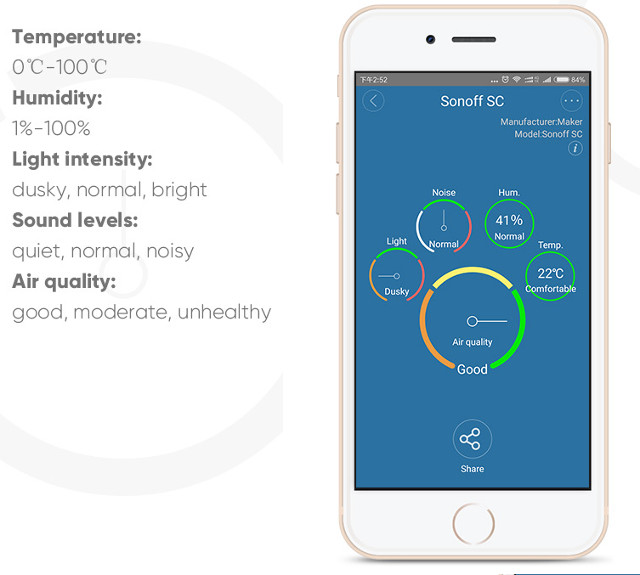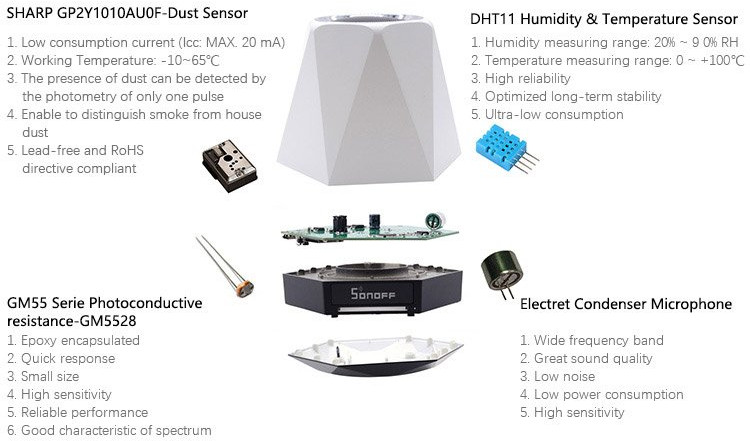ITEAD Studio has done some good job with their Sonoff home automation devices based on Espressif ESP8266 WiSoC, as they are affordable, working as advertised with default firmware, and hackable with our own. The company has now added a new model, which may or may not be as useful, with Sonoff SC environmental monitor device that detects current temperature, humidity, light intensity, air quality, and sound levels, and sends the data to eWeLink app installed on your Android or iOS phone.
 You may be thinking it can be used as a home assistant since it really looks like a speaker and include some sort of microphone, but the top of the device is probably used to let air and dust go through.
You may be thinking it can be used as a home assistant since it really looks like a speaker and include some sort of microphone, but the top of the device is probably used to let air and dust go through.
Sonoff SC specifications:
- WiSoc – Espressif ESP8266 Tensilica L106 processor @ 80/160 Mhz with WiFi
- MCU – Atmel ATMega328 MCU
- Connectivity – 802.11 b/g/n WiFi
- Sensors
- Sharp GP2Y1010AU0F dust sensor to detect smoke and dust
- DHT11 temperature and humidity sensor; Range: 0 to 100 °C
- GM5528 photo-conductive resistance
- Electrat condenser microphone
- Power Supply – 5V via micro USB port
The default firmware and eWelink app also allows to set various smart scenes to trigger other devices, for example if air quality is too poor, Sonoff SC could turn on a fan connected to Sonoff wirelesss switch, or lights could be turned on when it becomes dark.

But you don’t have to use the default firmware if you don’t want too, as Sonoff SC’s ATMega328 controller can be programed through the Arduino IDE if you want to change the firmware, while ESP8266 is used for WiFi only. You’ll find the schematics (PDF) and Arduino code in the Wiki.
If you are interested, you can purchase Sonoff SC for $19.90 on ITEAD Studio website with shipping adding $7.33 to $17 depending on selected shipping method.

Jean-Luc started CNX Software in 2010 as a part-time endeavor, before quitting his job as a software engineering manager, and starting to write daily news, and reviews full time later in 2011.
Support CNX Software! Donate via cryptocurrencies, become a Patron on Patreon, or purchase goods on Amazon or Aliexpress





